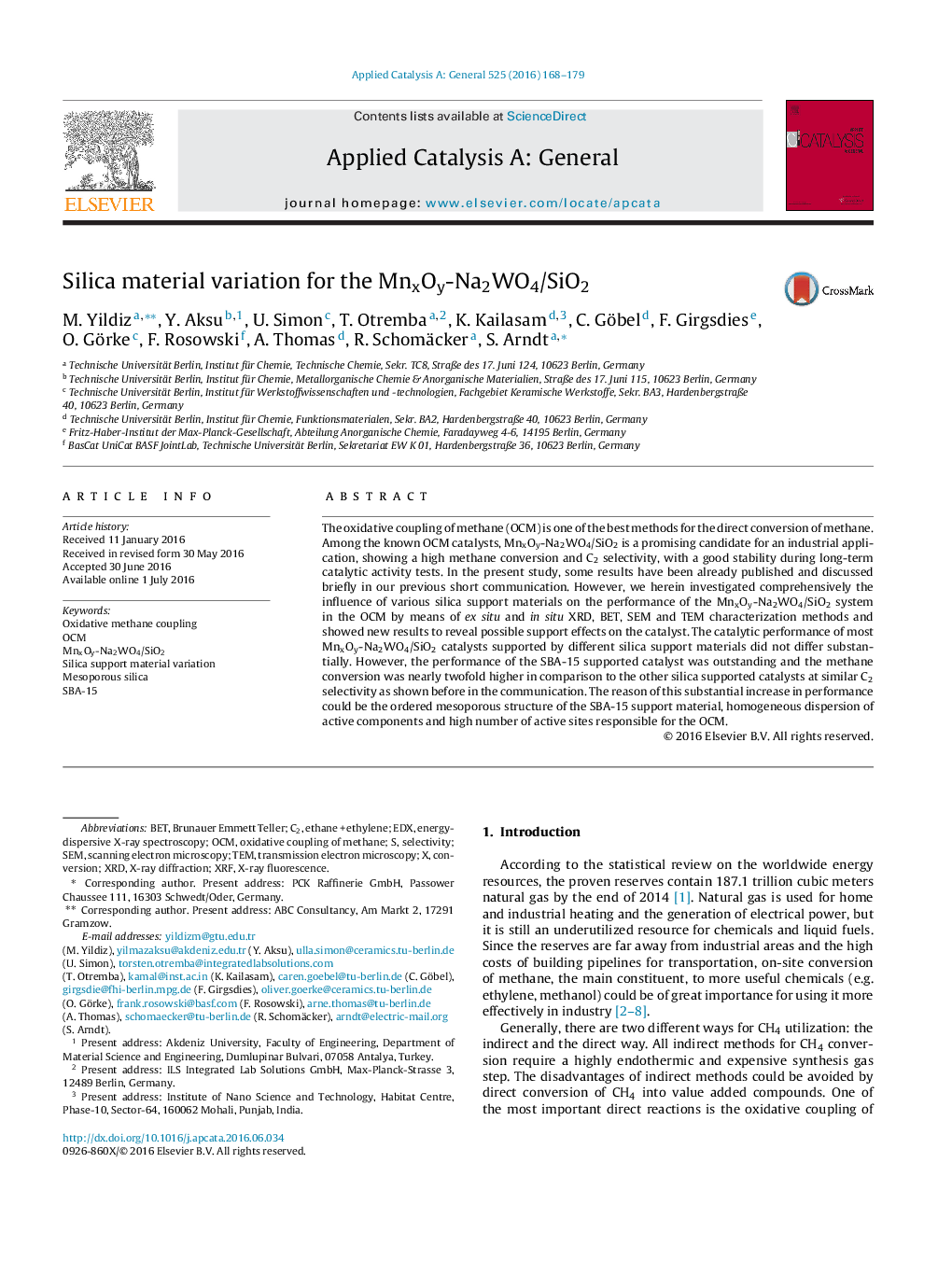| Article ID | Journal | Published Year | Pages | File Type |
|---|---|---|---|---|
| 38687 | Applied Catalysis A: General | 2016 | 12 Pages |
•Silica support material during catalyst preparation has a strong influence on the performance of the MnxOy-Na2WO4/SiO2 for the OCM.•SBA-15 has been confirmed as an optimum silica support material for the MnxOy-Na2WO4.•Under reaction conditions, structural changes in silica support material occurred for comprehensively investigated MnxOy-Na2WO4/SiO2 catalysts and MnWO4 phase was detected.•α-Cristobalite phase of the SiO2 is less stable for the low-performance catalyst Cat-L under reaction conditions.•The transformation of amorphous silica to α-cristobalite starts at lower temperature for the high-performance catalyst Cat-H.
The oxidative coupling of methane (OCM) is one of the best methods for the direct conversion of methane. Among the known OCM catalysts, MnxOy-Na2WO4/SiO2 is a promising candidate for an industrial application, showing a high methane conversion and C2 selectivity, with a good stability during long-term catalytic activity tests. In the present study, some results have been already published and discussed briefly in our previous short communication. However, we herein investigated comprehensively the influence of various silica support materials on the performance of the MnxOy-Na2WO4/SiO2 system in the OCM by means of ex situ and in situ XRD, BET, SEM and TEM characterization methods and showed new results to reveal possible support effects on the catalyst. The catalytic performance of most MnxOy-Na2WO4/SiO2 catalysts supported by different silica support materials did not differ substantially. However, the performance of the SBA-15 supported catalyst was outstanding and the methane conversion was nearly twofold higher in comparison to the other silica supported catalysts at similar C2 selectivity as shown before in the communication. The reason of this substantial increase in performance could be the ordered mesoporous structure of the SBA-15 support material, homogeneous dispersion of active components and high number of active sites responsible for the OCM.
Graphical abstractFigure optionsDownload full-size imageDownload high-quality image (183 K)Download as PowerPoint slide
